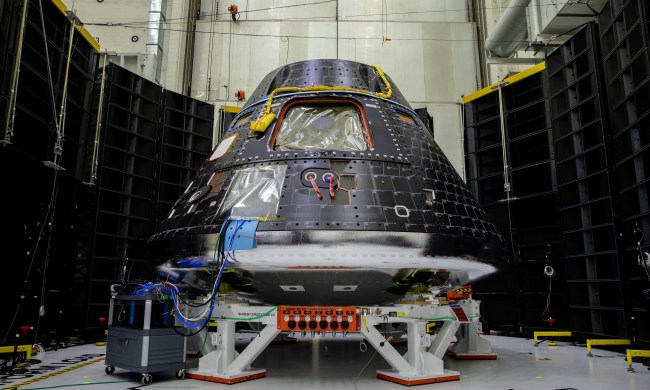NASA has proposed sending a spacecraft to Neptune’s strange moon Triton, to learn more about this mysterious body.
The last and only time a spacecraft visited Triton was 30 years ago, when the Voyager 2 spacecraft flew past it on its way out of the solar system. This visit discovered some strange puzzles about the moon, showing that there were huge icy plumes coming off the surface, but scientists couldn’t understand why. The finding suggested that there could still be some activity in this distant moon, and researchers want to know how this could be possible given that it is so far from the sun.
“Triton has always been one of the most exciting and intriguing bodies in the solar system,” Louise Prockter, director of the Lunar and Planetary Institute/Universities Space Research Association and principal investigator of the proposed mission, said in a statement. “I’ve always loved the Voyager 2 images and their tantalizing glimpses of this bizarre, crazy moon that no one understands.”

Other oddities about Triton include the fact that it orbits opposite to the way Neptune rotates, that it seems to have moved over time from the Kuiper Belt, and that it orbits at an extreme tilt. It also has an extremely unusual atmosphere.
“Triton is weird, but yet relevantly weird, because of the science we can do there,” said Karl Mitchell Trident project scientist at NASA’s Jet Propulsion Laboratory. “We know the surface has all these features we’ve never seen before, which motivates us to want to know ‘How does this world work?’
“As we said to NASA in our mission proposal, Triton isn’t just a key to solar system science — it’s a whole keyring: A captured Kuiper Belt object that evolved, a potential ocean world with active plumes, an energetic ionosphere and a young, unique surface.”
NASA wants to launch the mission in October 2025, which is the time at which Earth aligns with Jupiter to create a window that only appears every 13 years. This would allow the spacecraft to use the gravity of Jupiter to slingshot to Triton, arriving in 2038 for a 13-day-long pass.
The proposal is part of the Discovery Program, planning science missions to discover more about our solar system, and the mission could be selected as one of two studies for further consideration in summer 2021.



